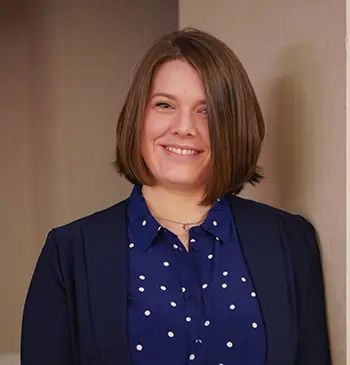Laura Alix is the Director of Research at Bank Director, where she collaborates on strategic research for bank directors and senior executives, including Bank Director’s annual surveys. She also writes for BankDirector.com and edits online video content. Laura is particularly interested in workforce management and retention strategies, environmental, social and governance issues, and fraud. She has previously covered national and regional banks for American Banker and community banks and credit unions for Banker & Tradesman. Based in Boston, she has a bachelor’s degree from the University of Connecticut and a master’s degree from CUNY Brooklyn College.

Getting a Clear View on Price in M&A
How should prospective buyers and sellers think about price?
Kurt Knutson sold his bank in 2022, but he laid the groundwork for the deal years earlier when he was exploring growth from the other side of the bargaining table.
Knutson founded Freedom Bancshares in Overland Park, Kansas in 2006. Around 2017, the CEO began looking for a potential acquisition target. The bank was in high growth markets around Kansas City and had a loan-to-deposit ratio in excess of 100%, so its leadership wanted to find a partner bank that had a lot of low-cost deposits from a diverse customer base. Knutson and his team then put together a list of banks that fit their criteria, and they updated that list as the environment and the bank’s balance sheet changed.
The Covid-19 pandemic put Knutson’s acquisition plans on ice. But when the board later revisited its strategy, it looked at those same criteria in thinking about how it could market itself for sale. Freedom Bancshares ultimately wound up selling to $1.6 billion Landmark Bancorp in Manhattan, Kansas for $33.35 million or roughly 152% of the bank’s tangible common equity.
As of Dec. 5, 2023, the median deal value to tangible common equity for announced deals fell to 124.5%, compared to 153.4% in 2022, according to S&P Global Market Intelligence.
“When a bank gets to a point where they’re considering selling, they have a tendency to show up at the table with, ‘Here’s what I have – what do I get?’” says Knutson, who wrote a book about the experience, “The Art of Selling Your Bank.” He also runs the consulting firm Strategic Options. “If they would come to that from a perspective of, ‘Here’s what we can do, and here’s what we can become,’ then they help the buyer paint a picture of where they want to go.”
Bank Director’s 2024 Bank M&A Survey confirmed a continued gap between buyers’ and sellers’ pricing expectations, but it’s an open question as to how much of an obstacle that could pose to dealmaking in 2024 — and whether prospective sellers have a firm grasp on how much their bank could garner in today’s market.
Executives and board members responding to the survey revealed a delta between buyers’ and sellers’ goals around pricing, based on tangible book value: 35% of possible buyers said they would be willing to pay up to 1.5 times TBV, and 32% would pay up to 1.2 times tangible book. When asked about selling, 25% would accept a minimum of 1.5 times TBV, while 56% would want 1.75 times TBV or more.
M&A often includes a stock component, and while prospective sellers express a preference for higher deal multiples, it may be tough to get those kinds of numbers in an environment where bank stocks have seen broad declines. Bank leaders should consider the long-term value created in the deal, rather than the multiple that reflects the stock price the day before the announcement, says David Sandler, co-head of investment banking in the financial services group at Piper Sandler & Co.
In some cases, the multiple could seem underwhelming at the initial announcement, only to be offset by cost savings and later gains in the stock price.
“When we talk about prices, it’s glamorous to say, ‘I’m going to sell my bank for 175% of [tangible book value],” Sandler says. “What you’re really getting is an investment in a combined, go-forward earnings stream.”
Buyers are starting at a disadvantage if they want to use their own stock as part of an offer, says Rick Childs, a partner at Crowe LLP; the firm sponsored the 2024 Bank M&A Survey. Any stock consideration will dilute existing shareholders. Sellers need to understand that if a buyer offers a higher price, that may not be rewarded by the market. That could ultimately bring down the value of the stock that the seller is receiving in the deal.
Any bank board considering a prospective sale should understand the balance between price and ownership, says Sandler, and why the highest offer may not necessarily be the best combination in the long run. That should include discussions about culture, impact on capital and what the combined organization may be able to accomplish. “There should be some room for people to be flexible on both social and economic aspects of the transaction,” he says. “What you’re trying to do is make sure that the two companies are going to be successful together going forward.”
Knutson believes potential sellers can get a better price if they position their organization in terms of what it is capable of doing in the future, either if it continues to grow organically or as part of a combined organization, rather than taking a backward look at what it’s done to date.
“Because we went through this process and looked at [our bank] proactively,” he says, “we were in a much better position to communicate who we were and what we could become with the combination of the two banks.”


